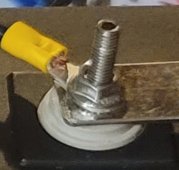I'm running a 48v system with 16 Eve 280 ah cells (ordered from Basin) and during testing, I'm having issues with the voltage sagging significantly under any moderate load. For example, under a 700 watt load the voltage will drop from 53v down to something like 48v (I'm measuring at battery terminals, not at inverter).
I'm trying to identify potential causes. The cells are balanced and within 10 mv of one another. Under load, some cells seems to drop more than others, but not enough to explain the large drop in pack voltage.
My question is, on a per cell basis how much should I expect voltage to sag under load? Additionally, what could be causing the voltage sag? I suspect it is either bad cells or bad busbars/connections. I know at least one of the busbars that came with the cells had major issues, and now I'm suspecting more are (I've ordered copper bar to make my own). But besides bad cells or bad busbars/connects what else could it be? Has anyone else had similar issues?
Thanks for any thoughts.
I'm trying to identify potential causes. The cells are balanced and within 10 mv of one another. Under load, some cells seems to drop more than others, but not enough to explain the large drop in pack voltage.
My question is, on a per cell basis how much should I expect voltage to sag under load? Additionally, what could be causing the voltage sag? I suspect it is either bad cells or bad busbars/connections. I know at least one of the busbars that came with the cells had major issues, and now I'm suspecting more are (I've ordered copper bar to make my own). But besides bad cells or bad busbars/connects what else could it be? Has anyone else had similar issues?
Thanks for any thoughts.



